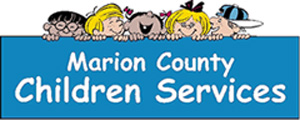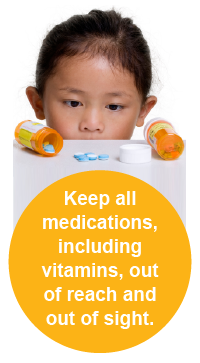MARION – Child abuse is preventable.
That’s the message that Marion County Children Services officials want community residents to understand and help to accomplish.
“What we’re trying to do, as a leader in the community in the protection of children, is to provide parents in the community with a call to action,” Executive Director Jacqueline Ringer said. “Truly, it takes a community to protect children. We need parents doing what they need to do to make sure they have support surrounding them, because parenting is hard. We need the community to also remember parenting is hard and to reach your arms around those that might be struggling. It’s everyone’s responsibility.”
Ringer and Community Education Coordinator Erin Turner said the need for a “call to action” became even more urgent in the wake of the death of 6-month-old Aaden Mannering. The boy died June 19 at Nationwide Children’s Hospital in Columbus following a June 17 incident which led to the arrest of his mother, Tequila Mannering. She is awaiting trial in Marion County Common Pleas Court on charges of murder, involuntary manslaughter and endangering children.
Sheriff Tim Bailey said investigators believe that Mannering shook her child and then struck him. However, when Mannering called 911 dispatchers on June 17, she said she was feeding the infant when he started choking and then stopped breathing.
Regardless of the true cause of the boy’s death, Ringer said the entire community needs to address child abuse, neglect, emotional maltreatment and other issues related to child safety.
“I always tell my husband that we’re one traumatic situation away from being in need,” Ringer said. “I need parents and I need this community to understand that child abuse is preventable. We can talk all day about the sad stories and the tragedies are there, but we need to take responsibility and come together and take action. If it means saving a child, that’s everything to me.”
According to the Marion County Children Services annual report for 2015, the agency served 1,939 local children last year. That equates to 1 out of every 7 children who live in the county. Staff members performed 863 assessments of safety broken down into the following categories: neglect, 464; physical abuse, 213; sexual abuse, 149; emotional maltreatment, 23; and dependency/family in need, 14.
Turner called parenting “the hardest job you’ll ever do without a manual,” noting that there is a need for people to reach out to each other to prevent feelings of isolation, especially for younger parents.
“Just a phone call to a new mother, to say, ‘Hey, how are you doing? Everything going okay? If you need me, call me,'” Turner said. “Little things like that will help.”
As part of its Child Abuse and Neglect Prevention Month initiative each April, the Ohio Children’s Trust Fund promotes “Pause for a Child,” which encourages local residents throughout the state to “take an active role in making their community a safe place for families and children.” Ringer shared basic tips that parents and caregivers can use to help them in times of crisis.
“We just need to remember to, one, pause for a child; two, reach out when we’re in need, and also reach out to those who may be in need,” Ringer said. “And then, lastly, but not least, would be to report your concerns.”
Ringer and Turner encouraged parents or caregivers who feel overwhelmed to reach out to children services for assistance or information. According to its website, the agency has brochures, pamphlets and videos available that address a wide range of family-related issues.
Turner said Marion County Children Services is offering two sessions of Child Abuse and Neglect Identification and Reporting Training later this year.
“It’s very in depth,” Turner said. “What we talk about is very sad and it’s very real. Our agency is very solution-focused. We want to make sure that whatever we do, whether it’s intake or a case plan or the training, is helping to solve the problem.”
The first class is scheduled for Aug. 25. The second session is set for Oct. 15. Classes will be held at the children services offices located at 1680 Marion-Waldo Road. For information or to register, contact Turner at 740-386-0428 or email her at erin.turner@jfs.ohio.gov.
Information about child abuse prevention is available on the Marion County Children Services website at www.marionkids.com, as well as the Ohio Children’s Trust Fund website at jfs.ohio.gov/OCTF. Call Children Services at 740-389-2317.
eacarter@gannett.com
740-375-5154
Twitter: @AndrewCarterMS
http://www.marionstar.com/story/news/2016/07/02/officials-child-abuse-preventable/86604464/?hootPostID=7d5acfed2c9ee406f945f4daf937a01c





 Children are curious by nature, and it makes sense that they would be even more curious when it comes to medication. Many medications look and taste like candy. While it’s important to encourage our kids to explore and discover new things, when it comes to medication, we want to be careful to keep them safe. Here are a few tips to show you how.
Children are curious by nature, and it makes sense that they would be even more curious when it comes to medication. Many medications look and taste like candy. While it’s important to encourage our kids to explore and discover new things, when it comes to medication, we want to be careful to keep them safe. Here are a few tips to show you how.